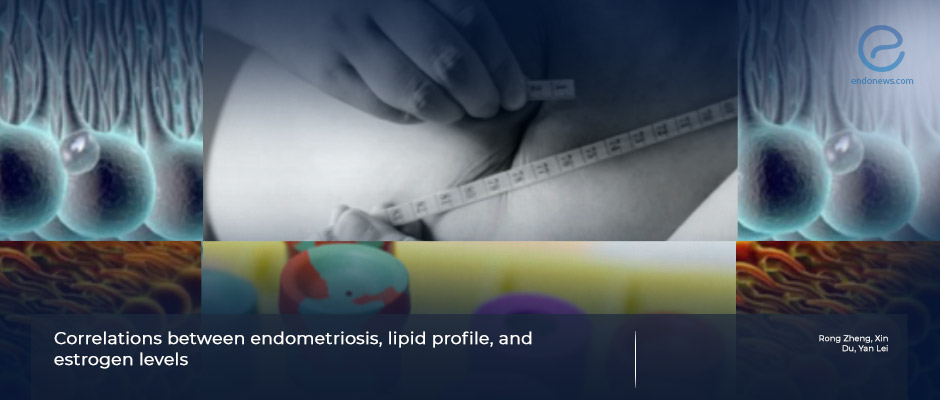The relationship between lipids and estrogen in endometriosis
Oct 10, 2023
When used in combination, some biochemical parameters may be helpful for endometriosis diagnosis, study shows
Key Points
Highlight
- Using a combination of estradiol (E2), triglyceride (TG), and glycoantigen 25 (CA125) levels may be helpful in enhancing the accuracy of endometriosis diagnosis and staging.
Importance
- Lipid and hormone metabolism are involved in many physiological and pathological conditions and are important parameters to evaluate in hormone-related disorders such as endometriosis.
What's done here
- Researchers from China led by Dr. Zheng conducted a retrospective study on a total of 177 patients who underwent surgery for ovarian masses.
- Their aim was to evaluate the relationships between lipid profiles, estrogen levels, body mass index (BMI), and endometriosis in these patients.
- The patients were divided into two groups as with and without endometriosis, and in addition, the endometriosis patients were evaluated between their stages (III and IV).
Key results
- The E2 and CA125 levels and pain scores showed statistically significant differences between patients with and without endometriosis.
- No differences were observed in age, lipid profile, number of pregnancies, BMI, blood group, mass size, presence or absence of comorbid fibroids, endometrial polyps, and adenomyosis between the two patient groups.
- Statistically significant differences in E2, triglyceride, and CA125 levels, and the size of the tumor mass were identified between stage III and IV patients.
- A predictive ability to detect higher-stage endometriosis with TG, E2, and CA125 levels when used in combination was observed.
Limitations
- Not including early-stage endometriosis patients, Not including different ethnicities other than Chinese, not including other diseases than endometriosis.
- Being a single center, nonlarge sample, retrospective study.
Lay Summary
Lipid metabolism plays important roles in many physiological and pathological conditions such as the storage of energy, immune system functions, steroid hormone production, inflammation, and chronic diseases such as diabetes mellitus and hyperlipidemia.
In an attempt to figure out the relationships between lipid profiles, estrogen levels, body mass index (BMI), and endometriosis, Zheng et al. from China conducted a retrospective study which was published in the July 2023 issue of the journal Medicine (Baltimore).
Patients who were operated on for benign ovarian masses over a period of 2.5 years were included in the study. Of 177 patients, 117 had a diagnosis of endometriosis (stage III or IV) whereas 60 of them were diagnosed with a benign condition. Clinical, histopathological, and biochemical characteristics of the patients were recorded along with the pain scores during dysmenorrhea using a scale system and risk factors for the reoccurrence or development of endometriosis.
The results were analyzed and compared between patients with and without endometriosis and additionally stage III and IV endometriosis patients. Statistically significant differences were observed in estradiol (E2) and glycoantigen 125 (CA125) levels, and pain scores whereas no differences were in age, lipid profile, number of pregnancies, BMI, blood group, mass size, presence or absence of comorbid fibroids, endometrial polyps, and adenomyosis between patients with and without endometriosis. The authors discuss the ability of the adipose tissue to convert androgens to estrogens and state that no correlations between the E2 and CA125 levels were found in the study indicating separate pathophysiological mechanisms for their increase in these patients.
Patients with stage III and IV endometriosis had statistically significant differences in E2, triglyceride, and CA125 levels, as well as size. It was stated that the studies that investigate the relationship between lipid profiles and endometriosis in patients show conflicting results, however, TG levels being significantly high in more advanced-stage patients in this study may be indicative of a possible link.
Lastly, the authors showed a predictive ability of TG, E2, and CA125 in staging endometriosis when used in combination and reported that this could be useful in enhancing the accuracy of endometriosis diagnosis.
Research Source: https://pubmed.ncbi.nlm.nih.gov/37478235/
endometriosis lipid profile body mass index estradiol CA125 trygliceride

